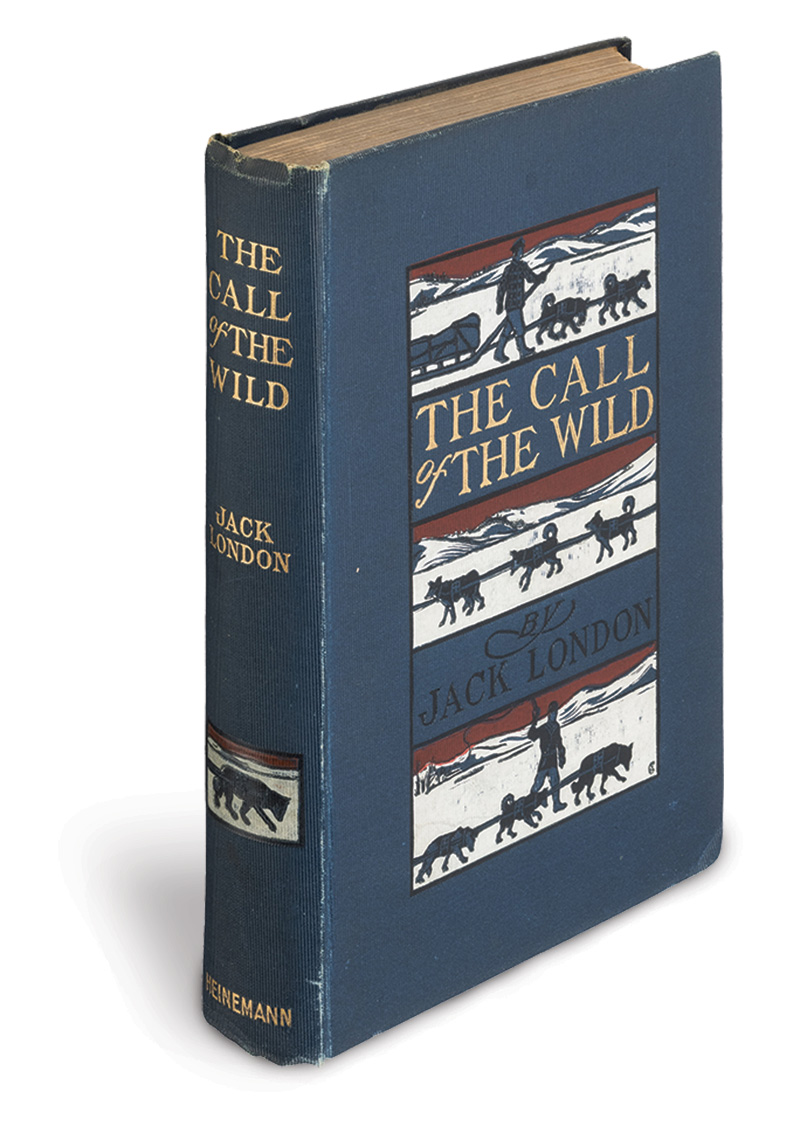Books
The Call of the Wild (1903, by Jack London)
Kidnapped from a comfortable life, Buck the dog is forced to labor on the trail to
and from the Klondike goldfields before ultimately escaping to join a wolf pack. Jack London’s novel gives the reader a gritty impression of the gold rush and brought its author international repute. Dogs London encountered during his own adventures in the Yukon likely served as models for Buck.
“To Build a Fire” (1908, by Jack London)
An author of many classics, London outdid himself with this haunting short story about a man who, having underestimated the danger of sub-zero temperatures during a solo journey into the Yukon interior, makes every effort to avoid freezing to death. No spoiler alert.
Good Time Girls (1998, by Lael Morgan)
Lael Morgan spent years researching the history of the Klondike Gold Rush. This book centers on period accounts of prostitution, outlining its amusements and horrors not only in the gateway towns of Skagway (Alaska Territory) and Dawson (Yukon Territory), but also in the Alaskan settlements of Dyea, Juneau, Wrangell and Tenakee Springs, where prostitutes served as “winter wives” to miners for a cut of their poke.
The Klondike Fever (1958, by Pierre Berton)
Shocking, enthralling and satisfying from first page to last, Pierre Berton’s award-winning account of the Klondike Gold Rush presents readers both the broad narrative and the personal histories that round out any retelling. Berton was born and raised in Yukon Territory in the wake of the rush and plumbed period records and personal recollections to relate this absorbing tale.
The Best of Robert Service (1940, by Robert W. Service)
Poetry pulls at the heart, and with such poems as “The Shooting of Dan McGrew” Robert Service also did an excellent job of capturing the atmosphere of the Yukon, where he lived from 1904 to ’12 while working as a bank teller. His poetry evokes both feel and attitude far better than facts and figures.
Movies
Call of the Wild (1935, on DVD and Blu-ray)
There are several film versions of Jack London’s Call of the Wild, among them ones starring Charlton Heston and Harrison Ford. But the 1935 version with Clark Gable, Loretta Young and Jack Oakie remains the best. It not only captures the feel of the Klondike Gold Rush, but also focuses on Buck the dog more than the other versions. Though the narrative strays from that of London’s novel, a gritty and defiant Gable is terrific in the lead role.
The Gold Rush (1925, on DVD and Blu-ray)
Present-day viewers may balk at films released during the silent era, but Charlie Chaplin’s Gold Rush is truly a must see. A wonderful satire on the Klondike, it includes such timeless comic scenes as the “Little Tramp” cooking and eating his shoes, and his prospecting partner envisioning him as a roast chicken. Aware of the starvation suffered by many Klondike prospectors, Chaplin turned their suffering into comedy gold.
White Fang (1991, on DVD)
Jack London’s 1906 novel, which revolves around the Klondike adventures of the eponymous wolfdog, has proved popular enough to inspire several films. The 1991 version—starring Ethan Hawke as a young man who, with White Fang’s help, seeks a valley of gold in the Yukon to fulfill his late father’s dying wish—is probably the best. The producers built an entire town for the film. Disney later turned over the set to the town of Haines, Alaska, which uses the buildings as a backdrop for its annual Southeast Alaska State Fair in late July.
The Far Country (1954, on DVD and Blu-ray)
Hollywood often portrays the Klondike as just a colder version of the Old West, though horses do not do well in the region. Still, this James Stewart “Northwestern” is a well-acted, fast-paced film. John McIntire portrays the villainous Judge Gannon, a character loosely based on real-life con man Jefferson “Soapy” Smith. The latter’s descendants reportedly threatened to sue if producers portrayed Soapy in a bad light, hence the name change.
The Spoilers (1942, on DVD and Blu-ray)
Centering on the Nome Gold Rush, which followed on the heels of the Klondike, Rex Beach’s 1906 tale of prospecting partners forced to battle corrupt, claim-jumping government officials has been brought to the big screen five times. Starring John Wayne, the 1942 version best captures the feel of what a real gold rush must have been like. Western aficionados will appreciate the epic fistfight waged between Wayne and a villainous Randolph Scott over the alluring Marlene Dietrich. Spoiler alert: Wayne wins—barely.


